
MAY CONTAIN NUTS

Search Shorpy
SHORPY ART

Framed or unframed, desk size to sofa size, printed by us in Arizona and Alabama since 2007. Explore now.
Join and Share
Ad-Free Shorpy
Shorpy is funded by you. Patreon contributors get an ad-free experience.
Learn more.

Recent comments
- Side Winder
- Air Quality?
- Sojourner Truth riot
- None were so blind(ed)
- The less famous sister
- Good ol' days?
- Rise and Fall
- Goo Goo Ga Joob
- Ticket Retention
- Not the only one
- Vagaries of War
- Killed by Amtrak
- Back to the Future
- Wanted --
- If you can't stand the light
- Centralized Traffic Control, I believe
- What's really happening
- Heckuva remote control!
- Sometimes — Things Go Bump!
- I SEE THE LIGHT
- Union Switch and Signal Company
- Get That Light Out Of My Eyes
- Eggs. Eggs. Eggs. The Egg Man is Here!
- Foreboding caption
- Famous Hollywood faces
- Not just S&P
- re: Those things in the jar
- Up In Smoke
- Medical Smoking
- Quick fix
Member Photos
The Shorpy
Print Emporium
Print Emporium
Search Shorpy
Search results -- 30 results per page
- $900 Million: 1914
- ...
US Postal Savings, existed from January 1, 1911 until July 1, 1967. It was still big in Europe the last time I looked. ... Posted by Dave - 01/06/2012 - 7:10am -
![$900 Million: 1914 1914. "Treasury Department, Office of Comptroller of Currency -- bond vault. Contains bonds to the value of $900 million securing government deposits and postal savings fund." National Photo Co. glass negative. View full size.
Smoke BreakLooks like he's reaching for the fan switch before they light up.
Then and Now$900 mil would be +/- $20,360,700,000 in 2011 according to the inflation calculators.
US Postal Savings, existed from January 1, 1911 until July 1, 1967. It was still big in Europe the last time I looked. This system was set up by the US Government to act as a saving account for anyone too poor to have a saving account or lived too far from a bank.
Two weeks worth of warThe direct cost of U.S. involvement in WWI was roughly $23 billion, from the U.S. declaration of war in April 1917 until the end of the war in June 1918. (Source: "Direct and Indirect Costs of the Great World War" 2d ed. [Washington 1920] by Ernest L. Bogart.) So the $900 million represented here covered the cost of two weeks of the looming "war to end all wars."
Glass ceilingWhat's going on with the top of the glass plate? At the top, it appears there's part of another picture, and the I-beams and everything else are abruptly cut off.
[It's the very top portion of another shot taken at the Treasury Department at the same time. At some point in the past, prints were copied to glass negatives and these two happened to be stacked unevenly atop one another.]
Postal SavingsFrom what I've been told about my coal miner grandfather, he used the postal savings exclusively. He distrusted banks, saying that (back then) there were any number of counters for making deposits, but only one for withdrawals. According to him, they even knocked a hole in the wall so you could put your money in at night.
(The Gallery, D.C., Natl Photo)](https://www.shorpy.com/files/images/31485u.thumbnail.jpg)
- Down the Pole: 1922
- ... is difficult as Seagrave built similar models to this from 1911 - 1920.
The shape of the hood, radiator, cover over the rear-wheel ... Posted by Dave - 06/28/2014 - 9:24am -
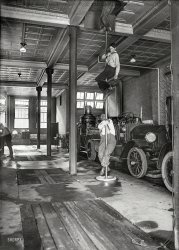
- Shuttered Dreams: 1937
- ... class condition” when advertised for sale in April of 1911.
(The Gallery, Charleston, F.B. Johnston) ... Posted by Dave - 06/16/2017 - 12:11pm -
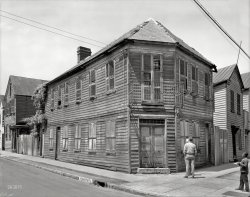
- Didn't I Have Six Dice (Colorized)?
- Colorized version of " A Winning Miss ," 1911. Art Photo Co., Grand Rapids, Mich. View full sizeM .
Lovely lady ... Posted by D_Osborne - 12/24/2011 - 10:54am -
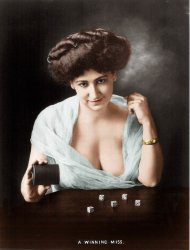
- Daniels & Fisher: 1910
- ... 5-inch Carl Sandell as a doorman. He held that post from 1911 until the store closed in 1958.
The Daniels & Fisher Department ... Posted by Dave - 03/06/2018 - 9:39pm -
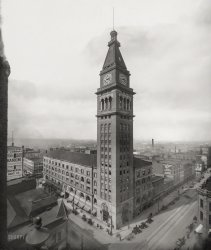
- Polo Grounds: 1909
- ... home This wooden grandstand burned shortly before the 1911 season and was replaced by a steel and concrete stadium that same year. ... Posted by Dave - 06/23/2014 - 6:23pm -
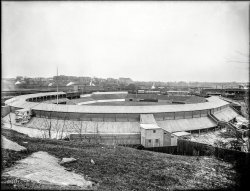
- Dynamite Kills Two Babes: 1920
- ... glass negative. View full size.
A good scout 1911 pattern Boy Scout badge on his lapel.
From the archives From the ... Posted by Dave - 06/11/2015 - 3:51pm -
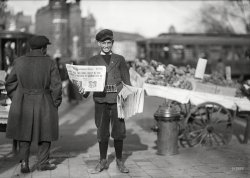
- The Big Game: 1912
- ... back, punter, and placekicker) Jim Thorpe. Between 1911 and 1913, the team won 38 games and lost 3. I'm betting (because I can't ... Posted by Dave - 08/27/2012 - 1:19pm -
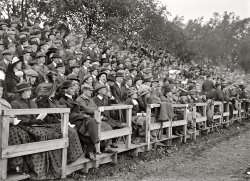
- Theta Pi Pastels: 1910
- ... at the turn of the last century.
The following year (1911), some of he girls who made those shirtwaists (aka "blouses") would die in ... Posted by booboogbs - 02/22/2015 - 5:03pm -
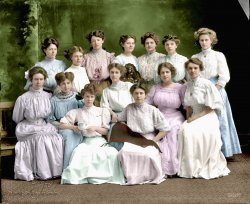
- Lux Luna: 1905
- ... burn with a final fire in 1944, but there were others in 1911, 1917, 1934.
The famous Incubator ... Posted by Dave - 04/24/2019 - 11:19am -

- Federal Triangle: 1935
- ... Raleigh Hotel (constructed after the original was razed in 1911) on the northeast corner of the intersection.
Still looks the same, ... Posted by Dave - 10/21/2014 - 5:36pm -
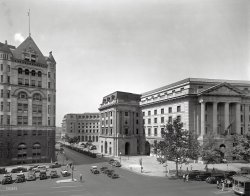
- Tenement Beautiful: 1921
- ... It was New York's main exhibition hall from its opening in 1911 until the early 1950's, when it was demolished and a high-rise built on ... Posted by Dave - 03/21/2014 - 2:40pm -
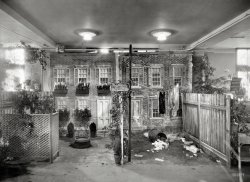
- Freddie the Newsie: 1915
- ... works...if he turned 87 in Jan. of '98, he was born in 1911 and would have been 4 at the time of the picture...a little younger than ... Posted by Dave - 02/15/2008 - 3:22am -
![Freddie the Newsie: 1915 May 1915. Sacramento, California. "Freddie Kafer, a very immature little newsie selling Saturday Evening Posts and newspapers at the entrance to the State Capitol. He did not know his age, nor much of anything else. He was said to be 5 or 6 years old. Nearby I found Jack, who said he was 8 years old, and who was carrying a bag full of Saturday Evening Posts, which weighed nearly half of his own weight. The bag weighed 24 pounds, and he weighed only 55. He carried this bag for several blocks to the [street]car. Said he was taking them home." Photograph and caption by Lewis Wickes Hine. View full size.
Freddie the NewsieLittle Freddie appears to be wearing a child-size version of carpenter's bib overalls. The slim vertical pocket is to hold a carpenter's flat pencil.
I wonder how high these very young children could count. Probably they rarely if ever had to make change for a purchase. But they would have to trust an adult to settle their accounts and pay them their meager earnings.
That Bagis almost as big as he.
Possible good news about Freddie!If his obit is on this page, he went on to have a wonderful life after he graduated from Princeton in '34!
See http://tinyurl.com/ywdhee !
The time frame works...if he turned 87 in Jan. of '98, he was born in 1911 and would have been 4 at the time of the picture...a little younger than Mr. Hine's estimated 5 or 6.
(The Gallery, Kids, Lewis Hine)](https://www.shorpy.com/files/images/05577u.thumbnail.jpg)
- With Both Barrels: 1937
- ... version of the story. But my grandmother, who was born in 1911, did tell me she learned to drive in a Model T.
In any case, this is a ... Posted by Dave - 02/23/2018 - 1:30pm -
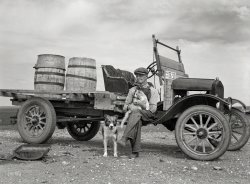
- Rudnick Tire: 1921
- ... Texas. He was the son of Russian-Jewish parents. In 1911, he entered the US in Laredo, Texas, from Mexico, and reported his ... Posted by Dave - 01/15/2012 - 11:29am -
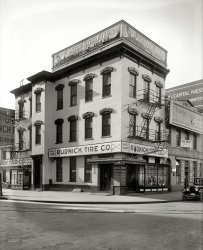
- Harbor Springs: 1906
- ... 1903. Lincoln Park Boat Line of Chicago acquired her about 1911, and she met her end on there on Morgan Shoal, July 15, 1914.
... Posted by Dave - 09/05/2014 - 12:13pm -

- Double Nickel: 1912
- ... time on the 8th floor.
Peter Smith and Sons In 1911 Peter Smith leased the corner of Griswold and State for 99 years. The ... Posted by Dave - 03/09/2017 - 4:00pm -
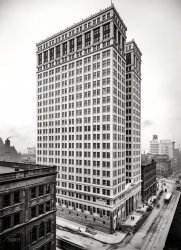
- 23rd Street Piers: 1910
- ... number of years. Neighboring DPC images are from 1908 and 1911. - Dave]
Sorry. I was going by the 1910 in the caption. But if the ... Posted by Dave - 11/01/2019 - 11:07am -
![23rd Street Piers: 1910 Circa 1910. "Twenty-Third Street piers, North River, New York, N.Y." 8x10 inch dry plate glass negative, Detroit Publishing Company. View full size.
Tank wagonI'm sure some Shorpyite out there will know: What's that liquid being discharged from that wagon on the left?
[Dihydrogen monoxide. - Dave]
Oceans of it ...To AD:
She is indeed the Oceanic.
To Dave:
That insidious poison Dihydrogen Monoxide is everywhere! I think Monsanto plays a role. They spray it on the streets. They spray it on plants. Why, it's even here in the drink at my elbow!
Nasty stuff.
The End of the LineI believe this was in use by the railroads before they had tunnels into Manhattan. I think the end of the line was in New Jersey and they brought everybody over to New York on ferry boats. By this time, however, the Pennsylvania RR had a tunnel into NYC and Penn Station, but I think I remember reading that the Erie and Lackawanna Railroads used the ferry from NJ to NYC for a number of years after this.
A White Star LinerThe liner whose funnels and aft masts are barely visible belongs to the White Star Line (the company flag being clearly visible). I am going to make an educated guess that the ship is the SS/RMS Oceanic of 1899. My rationale is there were a limited number of WS ships that sailed to and from New York which was regarded as the most glamorous port on this side of the Atlantic. In 1910 there were five ships assigned the Liverpool/Southampton to New York route. Those were the Oceanic (a one off ship design that had no sisters) and the so called Big Four consisting of the Celtic, Cedric, Baltic and Adriatic. All five were two stackers. But after looking at photos of the ships (Wikipedia is awesome) I believe that the mast closest to the aft most of the smoke funnels is too far forward to be one of the Big Four. That leaves the Oceanic. I tried to match the masts in the photo here with ones from photos of the Oceanic and they are close though not a perfect match. But the difference is so slight it could be attributable to the angle of the photo or simply ordinary maintenance on the masts.
Input from other Shorpy regulars is welcome.
(Add -- The White Star flag was so far down it appeared to me as though it was at half mast. On reflection, I believe that is likely the case. King Edward VII died in May of 1910 and in those days formal mourning was observed for a full year.)
[You're grasping at straws here. This photo could have been taken in any number of years. Neighboring DPC images are from 1908 and 1911. - Dave]
Sorry. I was going by the 1910 in the caption. But if the date could run as far back as 1908, and I am unable to see anything in the image that would narrow the date range, then yeah, it's not possible to be sure what was going on there.
(The Gallery, Boats & Bridges, DPC, NYC, Railroads)](https://www.shorpy.com/files/images/SHORPY-4a25244a.thumbnail.jpg)
- Long John Loehler: 1921
- ...
A Kroeger model from 1911 is shown below.
Masters in Engineering There is a listing in the ... Posted by Dave - 08/04/2012 - 3:41am -
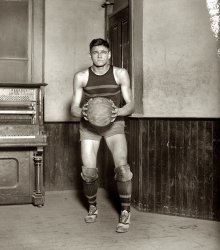
- Dogs to Go: 1923
- ... while Victor's Dog occupies an addition built around 1911. It's easily discernible by the color change and slight offset in the ... Posted by Dave - 12/05/2014 - 8:33pm -
![Dogs to Go: 1923 San Francisco circa 1923. "Buick touring car at Victor's Dog." Not to be confused with Nipper, that other (RCA) Victor dog, and where's the bun? 6½ x 8½ inch glass negative, originally from the Wyland Stanley collection. View full size.
Curb ServiceThe attractive young woman on roller skates is a few years off.
Cliff HouseThe Buick is parked in front of the Cliff House on Point Lobos Avenue in the city. On the sidewalk, actually. Here's a 1912 comparison view that shows the same storefront albeit with a different occupant.
This is the third incarnation of the Cliff House, finished in 1909. The restaurant portion is to the left with the curtained windows, while Victor's Dog occupies an addition built around 1911. It's easily discernible by the color change and slight offset in the facade. A close examination of the original print of the 1912 photo indicates a cigar vendor was the original occupant.
The previous two Cliff Houses, both built of wood, burned to the ground in 1894 and 1907 respectively. The owner didn't need another warning, and this version was constructed of bunker-like concrete nearly a foot thick. It's still standing today.
[Cliff House in 1955. - Dave]
SurvivorsFinally. In this series of fine automobiles of yesteryear a brand that is still with us. Same for the hot dog that rose to national fame due to vendor/caterer Harry M. Stevens.
(The Gallery, Cars, Trucks, Buses, Eateries & Bars, San Francisco, W. Stanley)](https://www.shorpy.com/files/images/SHORPY-157-01.thumbnail.jpg)
- Fifteenth and H: 1923
- ... circa 1923. The former office building, put up in 1911, became apartments in 2005. National Photo Co. View full size.
I ... Posted by Dave - 08/05/2012 - 10:56am -
![Fifteenth and H: 1923 The Woodward Building in Washington circa 1923. The former office building, put up in 1911, became apartments in 2005. National Photo Co. View full size.
I wonder......if people in the 1920's lived happier lives overall than people do today. Look at that picture. The streets seem clean and pleasant. I bet that area is a mess now.
[It's not. - Dave]
A win for preservationists Washington Post, Mar 9, 1990
Court Bars Demolition of Woodward Building
Preservationists Hail Curb on "Special Merit"
Preservationists hailed a major victory yesterday when the D.C. Court of Appeals stopped plans to tear down a turn-of-the-century office building in the Fifteenth Street Financial Historic District.
The decision, the first to use the city's historic preservation law to overturn a demolition order issued by the mayor, placed new limits on the city's power to find that the "special merit" of a development justifies destruction of a historic site.
"Virtually every historic building will now have to pass a tougher standard in order to be torn down. It will effect every single historic building," said Cornish F. Hitchcock, who represented the Committee of 100 of the Federal City, a private planning body that argued for yesterday's decision.
The stakes in the case were grander than its subject; The Woodward Building, a U-shaped beaux arts structure at 1426 H. S. NW. ....
(The Gallery, Cars, Trucks, Buses, D.C., Natl Photo)](https://www.shorpy.com/files/images/32261u.thumbnail.jpg)
- 5th Av. & 77th St. NYC
- ... Street in New York City, winter 1905-06. On record as of 1911, this was the residence of William A. Clark, former U.S. senator. 5x7 ... Posted by bronson - 08/06/2007 - 2:55pm -
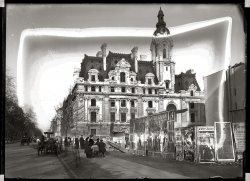
- The Louisburg: 1901
- ... After Miss Balch's death, the hotel was leased, in 1911 to J.A. Sherrad and for two years to L.C. Prior, proprietor of the Lenox ... Posted by Dave - 06/12/2015 - 9:48am -
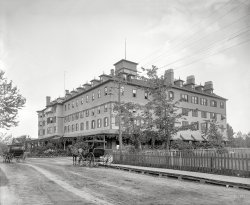
- Tables for Ladies
- Thanksgiving maskers outside a restaurant circa 1911, when a turkey dinner with all the fixings was 40 cents. View full size. ... Posted by Dave - 09/08/2011 - 9:03pm -
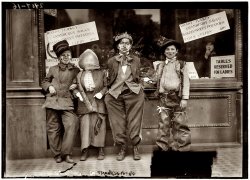
- Early Raleigh: 1908
- ... with a newer and much larger annex just to the north. In 1911 the Shepherd building would be razed and replaced with an expansion of the ... Posted by Dave - 12/26/2017 - 5:21pm -
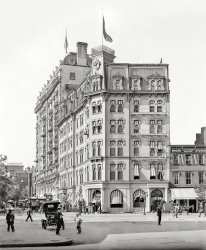
- Mr. Mambert: 1941
- ... the house, ending in fall of 1987. He came to America in 1911, from northern Italy, and soon thereafter his mother and five sisters came ... Posted by Dave - 10/11/2012 - 3:09pm -
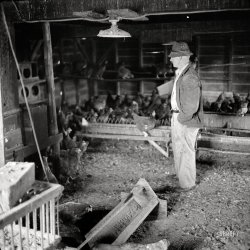
- Check It Out: 1907
- ...
A couple more things needed Here they are in 1911, lying in wait.
Early rising So new in its construction, there is ... Posted by Dave - 07/24/2020 - 11:23am -
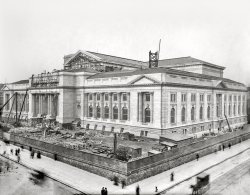
- It's Complicated: 1906
- ... & Financial Record, Volume 7, No. 7, August 12, 1911.
... Posted by Dave - 10/25/2019 - 7:15pm -
![It's Complicated: 1906 "Start of super heating union. [Inventor Charles S.L. Baker and another man, possibly his brother Peter, standing behind heating (radiator) system.]" Photo by Bode, Fifth and Felix Streets, St. Joseph, Missouri. Copyright by Charles S.L. Baker, Feb. 12, 1906. View full size.
The Original Friction HeaterCharles Baker invented the Friction Heater, which is shown in this photo. It consisted of a motor (left) that turned a shaft inside a water jacket that rotated a revolving wooden core that rubbed against the inner metal cylinder of the water jacket creating friction heat. The fluid in the water jacket heated up, flowing through the radiator (right) thus warming the space it was set up in. He got the idea originally when he was too lazy to grease the hubs of his father's wagon and the resulting heat failure of the wheels.
An article about this invention appeared in the Michigan Manufacturer & Financial Record, Volume 7, No. 7, August 12, 1911.
https://books.google.com/books?id=x7HmAAAAMAAJ&pg=PA16-IA17&dq=%22charle...
Nifty, but scaryThe man on the right is working the switch to the motor, which is on the left, which drives a cylinder inside a cylinder for a friction heater--that's the long cylinder on its side in the middle. You could power it with an electric motor (this case) or any other source (gasoline motor, etc..) of mechanical energy. You could call it an electric heater that didn't need nichrome (or other resistive materials) or lossy induction to work. One writeup I saw from "The Michigan Manufacturer" suggests Baker came up with the idea after neglecting to grease pins and axles on a wagon.
Nifty, but a bit of Rube Goldberg here if it's powered by a gasoline engine. I would also guess, as anyone who's ever worked on brakes would guess, that wear and noise were likely issues that users/owners had to deal with.
Scary; the way it's wired. The man on the right is lucky he's not about to be electrocuted, as he's holding a switch for 110V AC with no grounded shield.
(Technology, The Gallery)](https://www.shorpy.com/files/images/SHORPY-40934u.thumbnail.jpg)
- New York Central "Pacific" #3035: c.1920
- ... in his comment. It was one of twenty the NYC received in 1911 from The American Locomotive Company (ALCO). Up-state central New York. ... Posted by D_Chadwick - 06/03/2010 - 5:41am -
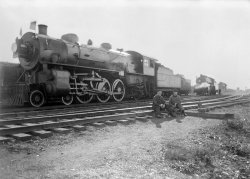
- Urban Cabin: 1910
- ... "Poet of the Sierras," relocated to Rock Creek Park in 1911 to make room for Henry White's mansion. View full size.
Box ... Posted by Dave - 07/04/2018 - 7:01pm -
![Urban Cabin: 1910 Washington, D.C., circa 1910. "Ambassador White at Poet Miller Cabin, Meridian Hill." The former home of Joaquin Miller, "Poet of the Sierras," relocated to Rock Creek Park in 1911 to make room for Henry White's mansion. View full size.
Box attached near the windowWhat does anyone make of the attached box. It looks to be protecting something from the weather. Is this a phone?
The wire/conduit that climbs the wall doesn't seem to reach the box proper, but appears to enter the house just below. The gauge seems to be oversized for phone service. Were electric wires run underground at that time?
[That looks more like a gaspipe. - Dave]
Precarious PerchBeautiful little cabin but I don't think I would like to try sitting in that chair to enjoy the view.
(The Gallery, D.C., Natl Photo, Patriotic)](https://www.shorpy.com/files/images/SHORPY-31579u.thumbnail.jpg)























